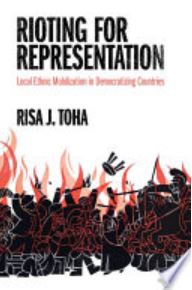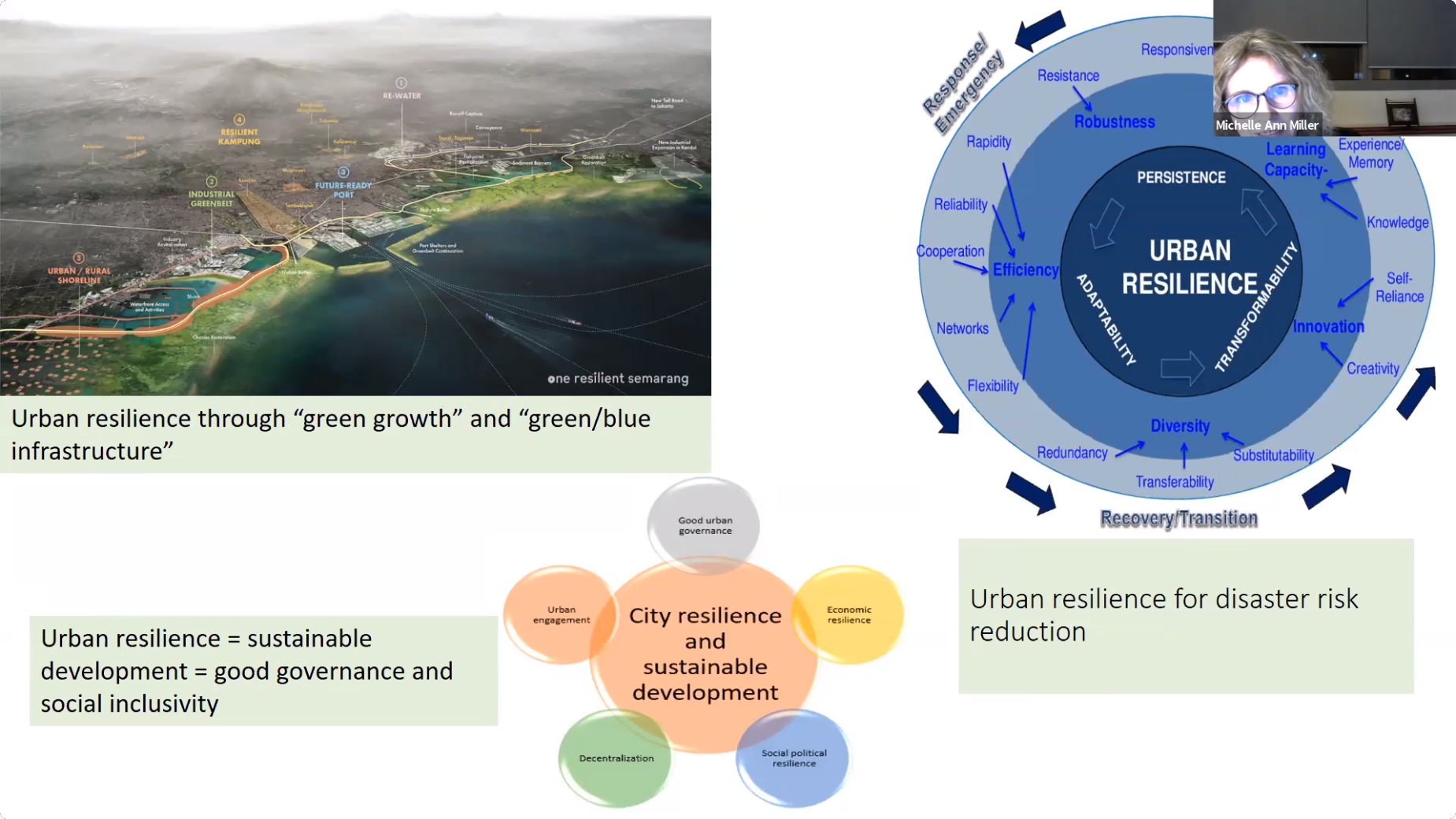International organizations want to create multi-stakeholder solutions to environmental problems, but do their ideas work in practice? This research in authoritarian Myanmar assesses how far “Landscapes Approaches” to governance can work. It finds that outsiders’ ideas about environmental democracy need to understand more about how states prevent inclusive discussion, but also how local stakeholders are changing faster than expected, writes Tim Forsyth
_______________________________________________
Consultation with local people is usually considered a good thing in environmental policy. The problem is, how to achieve this?
In recent years, policymakers have proposed various ways to build better consultation and participation in decision making about environmental protection. For example, phrases such as multi-stakeholder governance, or environmental pluralism have been used to describe how policymakers listen to different viewpoints. But can these work in the real world? What about countries where governments suppress democracy?
This blog summarizes recently-published research undertaken by the LSE on environmental democratization and multi-stakeholder governance in Myanmar.
The Landscapes Approach
Landscape Approaches are attempts to achieve multi-stakeholder environmental governance in conditions where agriculture, mining, and other productive land uses compete with environmental and biodiversity objectives. Since the 2000s various think tanks and development agencies including the World Bank, Food and Agriculture Organization of the United Nations, and International Union for the Conservation of Nature (IUCN) have proposed Landscape Approaches as a way to “shift the center of gravity of decision making to local people” (Sayer et al., 2013, p. 8356). Landscape Approaches differ from other forms of multi-level governance such as Reduced Emissions from Deforestation and Forest Degradation (REDD+) because they seek to achieve progress through political discussion and consultation, rather than through the operation of market-based mechanisms alone.
The IUCN has played an important role in shaping Landscape Approaches. In 2008, they published the “Lally principles” and “Sangha guidelines” (IUCN, 2008, p. 14), which tried to achieve multi-stakeholder governance based on cognitive practices (using visible knowledge claims). These principles urged policymakers to include stakeholders through a negotiated and transparent change logic where “mutual respect of values is essential” (Sayer et al, 2013, p. 8351). Together, these guidelines have also been called “landscape democracy” because they show “the operationalization of democratic and good governance principles (such as transparency, accountability, participation, legitimacy and coordination) in multi-stakeholder processes at the landscape level” (Minang, Duguma, et al., 2015, p. 389). Critics, however, say that these principles are optimistic, and based on a deficit model of governance – or the belief that progress can only occur when these qualities are in place (Forsyth, 2005).
Environmental policymaking in Myanmar
This kind of multi-stakeholder governance seem optimistic in places like Myanmar (previously known as Burma). Since the country’s independence from Britain in 1948, and especially since a military coup in 1962, it has experienced sporadic civil wars largely driven by the aims of the Burmese Army (or Tatmadaw) to occupy and control ethnic minority borderland areas. In February 2021 a further military coup destroyed the early steps to democracy encouraged by general elections in 2015. Since this coup, the country has experienced revolts against the Tatmadaw, and the army has responded by strict, and frequently brutal reprisals.
The research looked at a site of an attempted Landscapes Approach in Kachin State, in the far north of Myanmar. This region is characterized by highland villages, and lowland valleys, especially around Myanmar’s largest river, the Ayeyarwady (Irrawaddy). Kachin has also experienced violent conflict with the Tatmadaw since the 1960s. Violence still occurs in Kachin, where the Tatmadaw controls most of the lowlands and state capital, Myitkyina, but other areas are controlled by the Kachin Independence Organization (KIO) and the Kachin Independence Army (KIA) (Sadan, 2015). Some zones have dynamic and shifting political authority. One such zone is the land surrounding the jade mine at Hpakant. In recent years, jade production has been monopolized by the Tatmadaw, but both they and the KIA operate authority over neighboring villages.
The Research
The research focused on Lake Indawgyi in Kachin State, Myanmar’s largest freshwater lake (see Photo 1). The lake has been targeted by multi-stakeholder Landscape Approaches for some years through a combination of United Nations and other governance initiatives, aiming to protect fisheries and wildlife. In 2016, it was declared a Ramsar site, meaning it is a location of significant wetland biodiversity and habitats. More recently, the government and collaboration non-governmental organizations (NGOs) have extended land-use controls to the region around the lake in order to protect water flow, and to reduce sedimentation from agriculture.

The research asked: how far do the principles of Landscape Approaches declared by IUCN (2008) and others (e.g. Sayer et al 2013) apply under authoritarian and rapidly changing socio-economic conditions? What influences the emergence of inclusive, multi-stakeholder governance? And what lessons can we draw about building environmental democracy in locations such as Myanmar? There were three key findings.
Who defines the problem?
An important objective of Landscape Approaches is to achieve multifunctionality, or reconciling multiple ecosystem and livelihood landscape functions simultaneously. A typical landscape will have diverse land uses or functions: for example, the production of commercial agriculture, traditional agriculture, state-forestry projects, or environmental protection such as around Lake Indawgyi. Each land user, however, will have definitions of problems that reflect their own agendas. Farmers typically complain about the shortage of land. Fishing groups are concerned about the variable catch in the lake, or the shortage of markets. Environmentalists protest against illegal activities such as mining for gold deposits using high-pressure water hoses, or against the expansion of agriculture onto supposedly protected forests.

Trying to reach consensus between different groups, however, was affected by government legislation that sought to control how land is registered and sold. In 2008, the national constitution declared all land to be the property of the state. In 2012, the Farmland Law and the Vacant, Fallow and Virgin Land Management Law required all claims on land to be registered and certified. These changes were designed ostensibly to make land markets more efficient. But they have also been criticized for ignoring prior land claims, thereby encouraging dispossession and so-called “land grabs”, including by corporations installing new plantations on land previous used by local smallholders. These laws have sometimes made state officials or village heads gatekeepers for registration or impacted especially on vulnerable groups such as widows seeking to access land registered in their husband’s name (EMReF & Spectrum, 2019). In particular, the new land laws make it difficult to adopt or register land used for traditional, or shifting cultivation (known in Myanmar as taungya or Shwe Pyaung taung ya), which typically comprises unirrigated and opportunistic agriculture on sloping land beside quality farmland. This type of agriculture is typically used by poorer smallholders who might not have access to quality farmland.
A successful Landscapes Approach would acknowledge and incorporate these concerns. But the principles used to define the approach often calls for “a common concern entry point” to frame discussions (Sayer et al 2013, p. 8351). Yet, the new land laws make it difficult for Landscape Approaches to address problems faced by traditional forms of agriculture. Moreover, if discussions are organized around other concerns – such as water suppply to the lake – then this might reduce possible multifunctional options for agriculture in the land beyond the lake.
Who are the stakeholders?
Landscapes Approach principles imply making an inclusive space for stakeholders, often assuming they have different and predictable interests. For example, the Lake Indawgyi Biosphere Reserve lists stakeholders as national ministries, the local government in Kachin (including the forest, fisheries, and tourism departments), local groups (such as community organizations, villager elders, and fishing groups), as well as the policy and army (MNREC, 2017, pp. 56-58).
But the research found that stakeholders and their interests are rarely so stable and visible. Some important transitions were noted. First, it became clear that larger landholders were increasing the quantity of land by growing crops on land previously used for taungya. These lands were typically used for cash crops such as maize, or market vegetables. Meanwhile, a growing number of smallholders were supplementing their incomes by non-agricultural work, such as laboring in the jade mines. Fishing communities in Lake Indawgyi were largely comprised of immigrants to the region from neighboring Shan and Sagaing States, and were poorly integrated into other local livelihoods. (The fishing was largely done by men, but mainly women undertook the sale and processing of fish). The most rapidly developing economy, however, was dominated by new commercial traders in high-value products such as jade, or in shops and farming equipment. Most of these traders were ethnically Burmese (not Kachin), including some ex-Tatmadaw soldiers.

The engagement with multiple stakeholders in the Lake Indawgyi region, therefore, faces the challenge that groups such as farmers, fishers, and people engaged in mining are changing because of underlying socio-economic change, and because these sectors interconnect.
Is deliberation effective?
Landscape Approaches place great faith in well-intentioned and visible discussions between stakeholders. Predictably, our research found this did not happen. Local political structures and inequalities prevented local people from participating fully, or in framing deliberation.
The research found various examples of so-called land grabs, where land – typically that used for shifting cultivation in the past – had been allocated to military figures connected to the Tatmadaw, or then re-issued to companies, without including local people. In one village, the leader of the largest Tatmadaw-affiliated militia in Kachin (the Kachin New Democratic Army– Kachin) was given permission to use land in 2009 apparently as a reward. In 2011, the militia head leased the land to a Chinese company to grow a 200 hectare banana plantation. This plantation then imported low-cost laborers from Rakhine State (in western Myanmar) and cut more trees in land claimed as community forests by the Kachin village.
At a meeting with the Kachin Parliament, local parliamentarians expressed great interest in this case, partly because they feared Chinese involvement in Kachin. Public discussions stopped, however, when one parliamentary member from the Tatmadaw pointed at the Kachin members of the research team and asked “Who are you? Where do you live?”
Can Landscape Approaches work in Myanmar?
These are just some examples – the research identified more. But the conclusions of the research are not simply to say that environmental democracy, or Landscape Approaches are futile in Myanmar. Rather, it is more effective to ask whether Landscape Approaches (or multi-stakeholder governance in general) should be based on a deficit-model of governance that assumes progress is only possible when certain standards are met (such as mutual respect, a desire to include everyone, and a facilitating state). Sometimes these ideal-speech conditions are not possible, and should not be expected.
Instead, there is a need for greater attention to local social structures as drivers of both political inequality and environmental change; and as barriers to deliberative multi-scale, multifunctional governance. Moreover, multi-stakeholder governance is difficult when the composition and identity of stakeholders and their concerns are changing rapidly under conditions of commercialization and ethnic tensions. Sometimes the framing of discussions around points of common interest can reduce attention to other legitimate concerns too.
Together, these observations imply there is a need to see multi-stakeholder engagement as a process deeply influenced by processes of socio-economic transformation, rather than as a disconnected means to govern and control transformation. At present, Myanmar seems years away from any form of trusted democracy. Yet, there are still opportunities to understand how social and political structures prevent inclusive policymaking, and to take these into account, rather than waiting for ideal conditions to emerge.
References
EMReF, & Spectrum. (2019). Productive Farmers, Secure Tenure? Effects of Farmland Registration in Kachin State. Yangon: Enlightened Myanmar Research Foundation and Spectrum Sustainable Development Knowledge Network.
Forsyth, T. (2005). The political ecology of the ecosystem approach for forests. In J. Sayer & S. Maginnis (Eds.), Forests in Landscapes: Ecosystem Approaches for Sustainability (pp. 165-176). London: Earthscan.
IUCN. (2008). Learning from landscapes. In: Arborvitae Special Edition. Arborvitae.
Minang, P. A., Duguma, L. A., van Noordwijk, M., Prabhu, R., & Freeman, O. E. (2015). Enhancing multifunctionality through system improvement and landscape democracy processes: a synthesis. In P. A. Minang, M. van Noordwijk, O. E. Freeman, C. Mbow, J. de Leeuw & D. Catacutan (Eds.), Climate-Smart Landscapes: Multifunctionality In Practice (pp. 389-405). Nairobi: World Agroforestry Centre (ICRAF).
MNREC. (2017). Management Plan for the Multi-Internationally Designated Indawgyi Lake Basin: Indawgyi Widlife Sanctuary, Ramsar Site, ASEAN Heritage Site, Flyway Partnership Site and UNESCO Biosphere Reserve. Yangon: MNREC, Forest Department, Nature and Wildlife Conservation Division.(MNREC, 2017).
Sadan, M. (2015). Ongoing conflict in the Kachin State. In D. Singh (Ed.), Southeast Asian Affairs (pp. 246-259). Singapore: Institute of Southeast Asian Studies.
Sayer, J., Sunderland, T., Ghazoul, J., Pfund, J.-L., Sheil, D., Meijaard, E., . . . Buck, L. E. (2013). Ten principles for a landscape approach to reconciling agriculture, conservation, and other competing land uses. PNAS, 110(21), 8349-8356. doi: 10.1073/pnas.1210595110
About the Research
The study was based on fieldwork between 2017 and 2018 in Kachin State as part of a wider research project about land-use and livelihoods changes funded by the CGIAR Research Program on Water, Land and Ecosystems. The research was published in the following paper:
Forsyth, T. and Springate-Baginski, O. (2021) Are landscape approaches possible under authoritarianism? Multi-stakeholder governance and social transformation in Myanmar Environmental Science & Policy, 124, 359-369. https://doi.org/10.1016/j.envsci.2021.07.010
______________________________________________
*Banner photo by Isabel Retamales on Unsplash
*The views expressed in the blog are those of the authors alone. They do not reflect the position of the Saw Swee Hock Southeast Asia Centre, nor that of the London School of Economics and Political Science.





